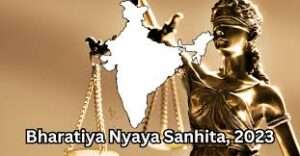
This article has been written by Taniya Mahanti, a second-year law student at UPES.

Introduction
Section 187 of the BNSS, enacted in 2023, deals with police custody and presentation of arrested individuals before a magistrate. It’s a significant departure from the corresponding provision in the Code of Criminal Procedure (CrPC), Section 167. Let’s delve into the key aspects of Section 187 and compare it with CrPC provisions, using relevant case laws.
Howdy, you all! Welcome to your page of knowledge. You will find different legal blogs, the latest news, current affairs, and many more on this channel. This is the initiative to develop the knowledge of the law in the world, especially for you.
Section 187 of BNSS: Key Points
- Presentation before Magistrate: Similar to CrPC 167(1), Section 187(1) mandates the arresting officer to produce the arrested person before the nearest magistrate “without unnecessary delay.” However, BNSS removes the specific mention of “nearest judicial magistrate,” potentially widening the pool of magistrates the arrestee can be presented before.
- Police Custody: Here’s where BNSS deviates significantly. CrPC 167(2) allows a maximum of 15 days in police custody, which can’t be split. Section 187(2) introduces a more flexible approach:
- Maximum Detention Period: The magistrate can authorize detention “for a term not exceeding fifteen days in the whole, or in parts.” This allows splitting the 15 days into smaller durations within a larger window:
- 40 days for non-cognizable offenses
- 60 days for cognizable offenses
- Maximum Detention Period: The magistrate can authorize detention “for a term not exceeding fifteen days in the whole, or in parts.” This allows splitting the 15 days into smaller durations within a larger window:
- Magistrate’s Authority: Section 187(2) empowers the magistrate, irrespective of jurisdiction, to authorize detention. CrPC 167(2) limited this power to the magistrate with jurisdiction.
Comparison with CrPC 167: A Case Law Perspective
Detention Period:
The flexibility in BNSS regarding detention periods has raised concerns. The Supreme Court judgment in “Raju vs. State of UP” (AIR 2009 SC 1852) emphasized the need to strictly adhere to the 15-day limit in CrPC 167. This principle might be challenged by the fragmented detention allowed under BNSS.
Magistrate’s Jurisdiction:
The broader authority granted to magistrates under BNSS (Section 187(2)) might create logistical issues. CrPC 167’s focus on jurisdictional magistrates ensured a magistrate familiar with the case could assess the need for further detention. This might be less streamlined under BNSS.
Potential for Abuse:
Critics argue that the split detention periods under BNSS could be misused by police to circumvent safeguards against prolonged custody. The landmark judgment in “D.K. Basu vs. State of West Bengal” (AIR 1997 SC 610) laid down guidelines to prevent custodial torture. Splitting detention periods might make it harder to monitor adherence to these guidelines.
Challenges in Implementing Section 187 of the BNSS
Section 187 of the Bharatiya Nagrik Suraksha Sanhita (BNSS), 2023, while introducing a seemingly flexible approach to police custody, presents several challenges in its implementation:
- Vagueness of “Unnecessary Delay”: Both BNSS 187(1) and CrPC 167(1) mandate presentation before a magistrate “without unnecessary delay.” However, the lack of a clear definition for “unnecessary delay” in BNSS creates ambiguity. This can lead to disputes and potential violations of the arrestee’s right to a speedy trial ( enshrined in Article 21 of the Constitution).
- Fragmented Detention Periods: The flexibility to split the 15-day detention period under BNSS (Section 187(2)) can be misused by police. For instance, an arrestee might be detained for short durations spread over weeks, making it harder to challenge the legality of detention through habeas corpus petitions.
- Magistrate’s Workload and Scrutiny: The expanded power of magistrates under BNSS (Section 187(2)) to authorize detention from any jurisdiction might overburden them. This could lead to cursory reviews of detention requests, impacting the effectiveness of judicial oversight over police custody.
- Lack of Transparency: The BNSS doesn’t specify reasons for splitting detention periods. This lack of transparency makes it difficult to hold authorities accountable and ensure that detention isn’t being used for coercive purposes.
Case in Point: In “Lalitha Kumari vs. Government of Andhra Pradesh” (AIR 2009 SC 402), the Supreme Court emphasized the need for clear reasons justifying detention beyond the permissible limit. The fragmented nature of detention periods under BNSS might make adhering to this principle more challenging.
Potential Impact on Habeas Corpus Petitions
Habeas corpus is a fundamental right under Article 22 of the Constitution, allowing individuals to challenge unlawful detention. Section 187 of the BNSS has the potential to significantly impact habeas corpus petitions:
- Increased Burden of Proof: The fragmented detention periods under BNSS make it harder for petitioners to establish that the total detention period is unlawful. This places a higher burden of proof on the petitioner to demonstrate that the cumulative detention is excessive.
- Strategic Manipulation by Police: Knowing that detention can be split, police might employ strategic arrests and detentions to make it difficult for petitioners to challenge the total duration. This could lead to situations where habeas corpus petitions become less effective safeguards against prolonged detentions.
- Timeliness of Petitions: The fragmented nature of detention periods creates uncertainty regarding when a habeas corpus petition can be effectively filed. This might lead to delays in seeking judicial intervention and potentially prolong unlawful detentions.
Case Reference: In “Kartar Singh vs. State of Punjab” (AIR 1994 SC 330), the Supreme Court laid down guidelines for expeditious disposal of habeas corpus petitions. The challenges posed by BNSS could lead to delays in such procedures.
The Role of National Human Rights Commission (NHRC)
The National Human Rights Commission (NHRC) plays a crucial role in safeguarding human rights, including protection from illegal detention. Here’s how the NHRC can monitor police custody practices under BNSS:
- Investigating Allegations of Abuse: The NHRC can investigate complaints of illegal detention or custodial torture arising under BNSS. This includes scrutinizing the use of split detention periods and ensuring they are not used to circumvent safeguards.
- Issuing Advisories and Guidelines: The NHRC can issue advisories to law enforcement agencies on best practices for implementing BNSS Section 187. This can include guidelines for ensuring transparency in detention procedures and adherence to judicial pronouncements on detention limits.
- Monitoring Implementation: The NHRC can monitor the implementation of BNSS by collecting data on detention periods and investigating potential violations. This data can be used to identify trends and recommend legislative or procedural changes to address identified issues.
NHRC’s Authority: The NHRC draws its power from the Protection of Human Rights Act, 1993. Section 17 of the Act empowers the Commission to inquire into allegations of violation of human rights and recommend remedial measures.
Conclusion
Section 187 of the BNSS represents a significant change in police custody procedures. While aiming for flexibility, it raises concerns about potential violation of individual liberties. Judicial scrutiny and interpretation, considering established case laws from the CrPC era, will be crucial in determining the effectiveness and legality of these changes.






